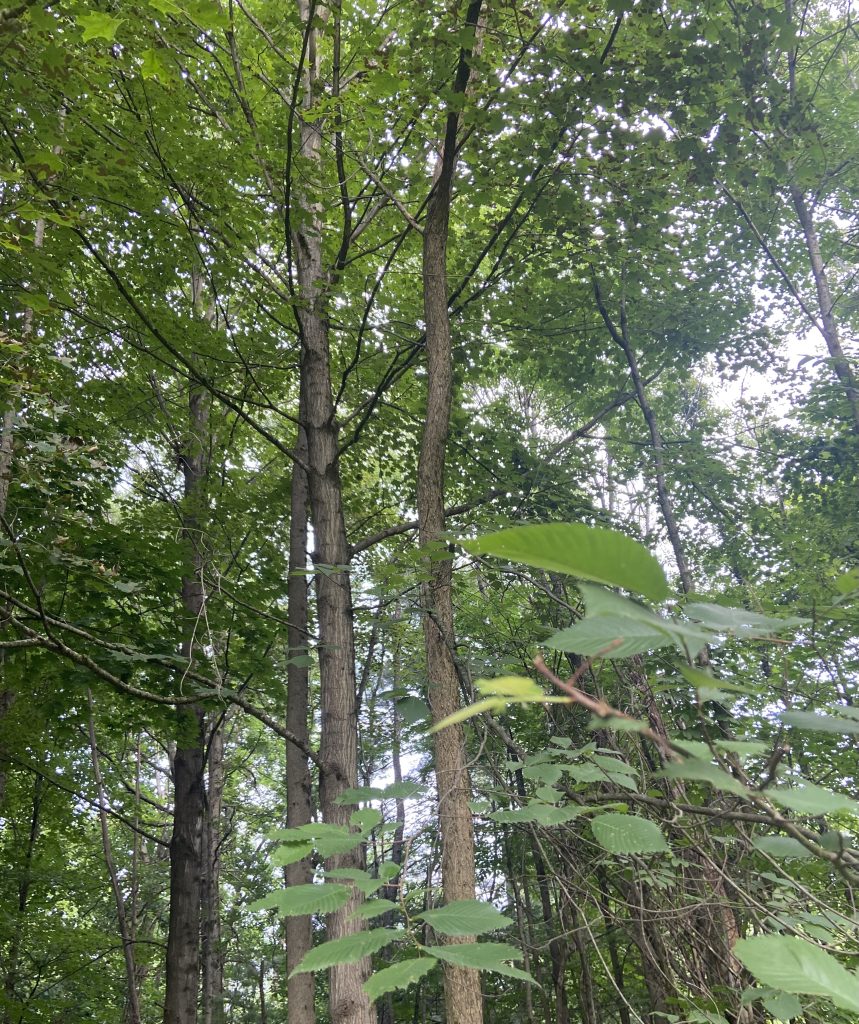Beech Leaf Disease Has Reached Adirondacks

The Adirondacks are one of the most popular tourist destinations in New York State. Hiking, camping, fishing and other outdoor activities attract millions of visitors to the Adirondack region every year, along with the beauty of the natural scenery… The visitors to the region represent an integral part of New York’s economy, generating hundreds of millions of tourism dollars each year.
However, maintaining the delicate ecosystems that attract these visitors has its challenges… Invasive species threaten the Adirondack ecosystem. Currently, the American Beech Tree faces an uncertain future due to Beech Leaf Disease, which is lethal to the species – American Beech Trees are a dominant breed of trees in the Adirondack forest. The American Beech tree is the only native species of beech that grows in North America… The American Beech normally grows 50-70 feet tall with a rounded crown. The Adirondack region is home to Beech trees that are 150 to 200 years old.
American Beech leaves are elliptical – they have pointed tips, many straight, parallel veins… These leaves are green in the summer, golden yellow and brown in the fall, and stay on the tree well into the winter. The characteristics of Beech Leaf Disease are striping, which is bands of thickened, dark green tissue between the leaf veins, and distorted puckering or curled leaves. The disease causes reduced leaf and bud production, and possible leaf loss as the disease progresses… This disease can kill mature trees in six to ten years, and young trees in two to three years.
The American Beech has value to the Adirondack wildlife… It is a welcoming host to caterpillars of the Early Hairstreak butterfly. These trees produce beechnuts, which are amongst the most important food for different species of wildlife – Raccoons, White-Tailed Deer, Porcupine, American Martens, Red Foxes, and Black Bears all consume beechnuts. Beechnuts are specifically important to Black Bear reproduction, because the females need the high protein content in their fall diet prior to hibernation… The American Beech also provides food and nesting sites for a variety of birds.
Beech Leaf Disease has been discovered in the Adirondacks, and is a lethal disease to Beech trees. This disease is believed to be caused by Nematode (Microscopic worm) Litylenchus crenatea mccannii. The full cause of the disease and how it spreads is still unknown… There are no known ways of managing this disease.
Tourism in the Adirondack region generates an estimated $387-million is direct labor income, and $644-million including direct and indirect income. The ecosystem of the Adirondack helps to support this tourism, and maintaining that ecosystem is crucial to the next generation of tourism, residents, and wildlife alike.
For more information, please visit wildadirondacks.org